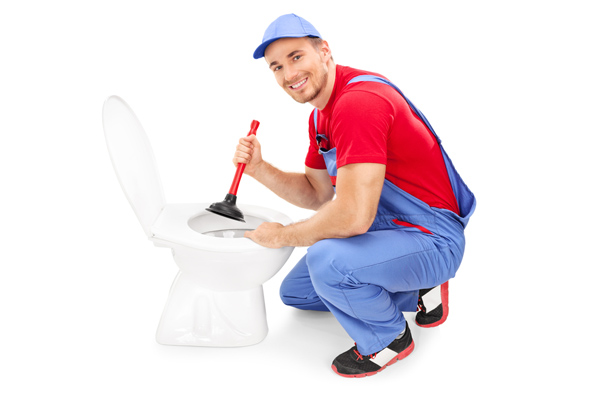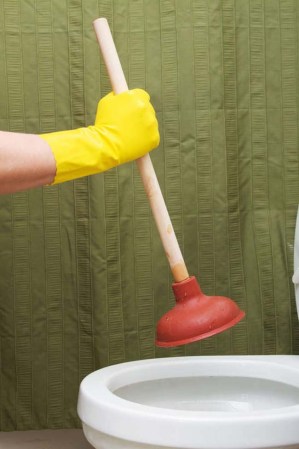Master Plungers and Drain Cleaners: Best Practices
Master Plungers and Drain Cleaners: Best Practices
Blog Article
Do you find yourself interested in answers around Here's How to Correctly Use a Toilet Plunger?

Intro
Proper maintenance of home drains pipes is essential for stopping clogs and making sure smooth water flow. Among the trick devices in every property owner's toolkit is the bettor, along with numerous drain cleaners made to tackle stubborn blockages efficiently. This article checks out just how to utilize bettors and drainpipe cleansers effectively to maintain your drains streaming easily.
Area 1: Understanding Bettors
Kinds of Plungers
There are several sorts of bettors available, each made for various sorts of drains pipes and blocks. One of the most common kinds include cup plungers, flange bettors, and accordion bettors.
Exactly How Plungers Job
Bettors service the principle of developing pressure and suction to dislodge obstructions. When correctly used over a drainpipe, they produce a vacuum cleaner that can take out particles or separate obstructions.
Selecting the Right Bettor
Choosing the best plunger relies on the sort of drain and the nature of the obstruction. Cup bettors are perfect for sinks and tubs, while flange plungers are better fit for commodes because of their style.
Typical Errors with Plungers
Staying clear of these blunders ensures reliable plunging: incorrect seal around the drain, insufficient pressure, and unclear bordering debris.
Section 2: Using Plungers Efficiently
Preparation
Before plunging, make sure the bettor covers the drain totally and develops a tight seal. Clear any noticeable particles around the drain opening.
Method
Beginning with gentle plunging activities to construct suction. Rise pressure gradually, using a consistent rhythm. Repeat as necessary up until the drainpipe gets rid of.
Repairing Tips
If diving does not work, try changing the seal, using petroleum jelly for a better seal, or using a different type of plunger.
Area 3: Comprehending Drainpipe Cleaners
Kinds Of Drainpipe Cleansers
Drain cleaners can be chemical or chemical. Chemical cleaners make use of solid chemicals to dissolve blockages, while enzymatic cleansers utilize natural enzymes to break down organic matter.
Just How Drain Cleaners Work
Chemical cleaners respond with obstructions to liquify them, while chemical cleaners break down organic products like hair and grease without damaging pipes.
Safety Considerations
Always wear gloves and eye security when using chemical drainpipe cleaners. Guarantee adequate ventilation and comply with supplier directions carefully.
Eco-Friendly Alternatives
Consider utilizing vinegar and cooking soft drink or enzyme-based cleaners for environment-friendly alternatives that are more secure for pipelines and the atmosphere.
Section 4: Using Drainpipe Cleaning Company Successfully
Application Strategies
Pour chemical cleansers straight right into the drain opening. Allow them to help the suggested time prior to flushing with warm water. Chemical cleaners should rest overnight.
Preventative measures
Stay clear of blending different sorts of cleansers, as this can create harmful fumes. Never ever use chemical cleansers along with a plunger, as spilling can happen.
Handling Persistent Obstructions
For relentless blockages, take into consideration using a pipes serpent or calling a specialist plumber to avoid damages to pipelines.
Final thought
In conclusion, recognizing just how to use bettors and drainpipe cleaners effectively is essential for preserving healthy pipes systems. By picking the right tools and techniques, property owners can tackle minor clogs and protect against major plumbing concerns down the line.
How To Properly Use A Plumbing Snake To Clear Drains
When any drain clogs in our home arise, we tend to gravitate toward the plunger and little else. In cases where the plunger and its vacuum-created pressure are not able to clear clogs, many immediately move to harmful chemicals or simply call their plumber to fix the issue.
we’re happy to help with all drain cleaning needs and concerns. This includes informing you on a few other home remedies you may have at your disposal for minor to moderate clogs, one of which is the use of a plumbing snake. Many people have never used one of these before – let’s go over the steps to take when your drain clogs and you have a plumbing snake available.
Attempt Plunger Use
The first step here, as we noted above, should indeed be to grab your plunger when you notice a drain clog and attempt to resolve it this way. If you’re unsure how to use a particular type of plunger, our plumbers can answer any questions you have. If this doesn’t do the trick, however, you move on to the snake.
Locate And Prepare Snake
A plumbing snake is a metal or plastic device that’s generally about a quarter of an inch thick. It’s design with significant extensions, meant to reach down into your clogged drain and push the clog out. Snakes also contain drain augers that will latch onto and push stubborn blockages.
If your plunger doesn’t clear a clog, locate your snake and bring it to the drain in question. We also recommend keeping a bucket nearby to collect the clog once you pull it out, plus we’d advise wearing goggles and possibly protective gloves.
Feed Snake
Once you’re ready to go, feed the snake slowly down the drain, using the crank device it comes with to keep it moving until it finds the clog. Once this happens, much of the clog will be latched onto the coil so you can pull it out, while the rest will simply break up and flow downward.
Detach Debris
Remove the snake slowly from the drain, and once you’ve done so, pick off any debris that’s stuck to the coil. This is another area where wearing gloves is a must.
Flush Drain
Finally, take a few minutes to ensure the snake has done its job correctly. If you’ve been using it on a toilet, flush the toilet a couple times and make sure everything flows well. If you’ve used it on a different drain, flush it with some room temperature water.
https://www.mybuddytheplumber.com/blog/how-to-properly-use-a-plumbing-snake-to-clear-drains/

Application Strategies
Pour chemical cleansers straight right into the drain opening. Allow them to help the suggested time prior to flushing with warm water. Chemical cleaners should rest overnight.
Preventative measures
Stay clear of blending different sorts of cleansers, as this can create harmful fumes. Never ever use chemical cleansers along with a plunger, as spilling can happen.
Handling Persistent Obstructions
For relentless blockages, take into consideration using a pipes serpent or calling a specialist plumber to avoid damages to pipelines.
Final thought
In conclusion, recognizing just how to use bettors and drainpipe cleaners effectively is essential for preserving healthy pipes systems. By picking the right tools and techniques, property owners can tackle minor clogs and protect against major plumbing concerns down the line.
How To Properly Use A Plumbing Snake To Clear Drains
When any drain clogs in our home arise, we tend to gravitate toward the plunger and little else. In cases where the plunger and its vacuum-created pressure are not able to clear clogs, many immediately move to harmful chemicals or simply call their plumber to fix the issue.
we’re happy to help with all drain cleaning needs and concerns. This includes informing you on a few other home remedies you may have at your disposal for minor to moderate clogs, one of which is the use of a plumbing snake. Many people have never used one of these before – let’s go over the steps to take when your drain clogs and you have a plumbing snake available.
Attempt Plunger Use
The first step here, as we noted above, should indeed be to grab your plunger when you notice a drain clog and attempt to resolve it this way. If you’re unsure how to use a particular type of plunger, our plumbers can answer any questions you have. If this doesn’t do the trick, however, you move on to the snake.
Locate And Prepare Snake
A plumbing snake is a metal or plastic device that’s generally about a quarter of an inch thick. It’s design with significant extensions, meant to reach down into your clogged drain and push the clog out. Snakes also contain drain augers that will latch onto and push stubborn blockages.
If your plunger doesn’t clear a clog, locate your snake and bring it to the drain in question. We also recommend keeping a bucket nearby to collect the clog once you pull it out, plus we’d advise wearing goggles and possibly protective gloves.
Feed Snake
Once you’re ready to go, feed the snake slowly down the drain, using the crank device it comes with to keep it moving until it finds the clog. Once this happens, much of the clog will be latched onto the coil so you can pull it out, while the rest will simply break up and flow downward.
Detach Debris
Remove the snake slowly from the drain, and once you’ve done so, pick off any debris that’s stuck to the coil. This is another area where wearing gloves is a must.
Flush Drain
Finally, take a few minutes to ensure the snake has done its job correctly. If you’ve been using it on a toilet, flush the toilet a couple times and make sure everything flows well. If you’ve used it on a different drain, flush it with some room temperature water.
https://www.mybuddytheplumber.com/blog/how-to-properly-use-a-plumbing-snake-to-clear-drains/

As a passionate person who reads on , I imagined sharing that chunk was really helpful. So long as you enjoyed our blog entry plz remember to pass it around. Bless you for your time. Return soon.
Visit Link Report this page